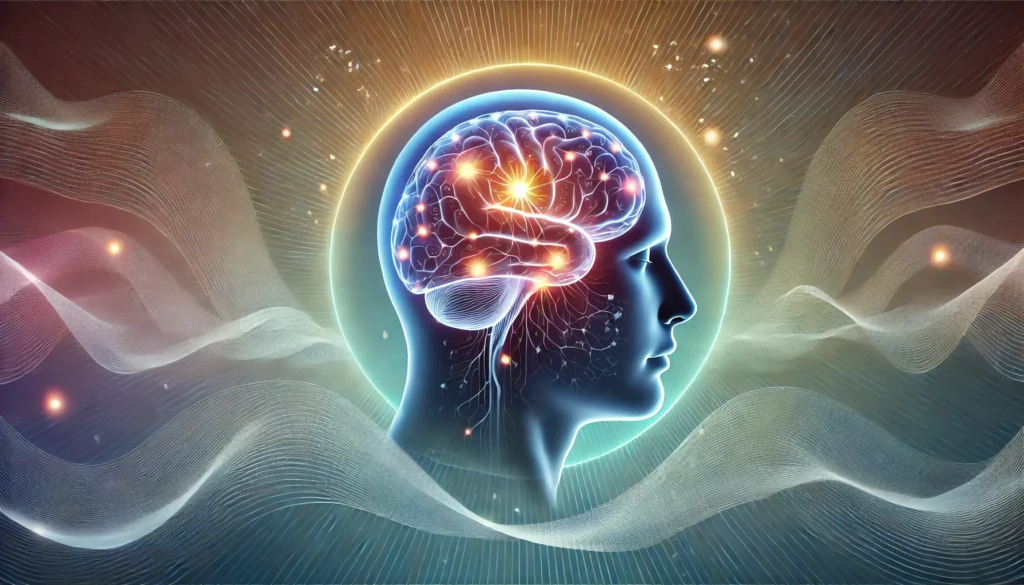Stress, in its essence, is the body’s response to challenges or demands. While short-term stress can be beneficial, chronic stress can have detrimental effects on both physical and mental health. Meditation, a practice rooted in ancient traditions, offers a counterbalance by promoting relaxation and mindfulness.
The Nature of Stress
Stress is a natural reaction to perceived threats or challenges, triggering the body’s fight-or-flight response. While this response can enhance performance in critical situations, prolonged activation can lead to health issues. Understanding the difference between acute and chronic stress is crucial for effective stress management.
Meditation’s Historical Roots
Meditation has been practiced for thousands of years, with origins in Hinduism and Buddhism. These ancient traditions recognized meditation as a path to spiritual enlightenment and inner peace. Over time, meditation has transcended its religious roots to become a universal practice for mental and emotional well-being.
Meditation’s Modern Renaissance
In recent decades, meditation has experienced a renaissance in Western culture. This resurgence is fueled by scientific research validating its benefits and a growing interest in holistic health practices. As a result, meditation is now widely accepted as an effective tool for stress reduction and overall wellness.
The Science Behind Meditation
Meditation works by engaging the parasympathetic nervous system, which helps reduce the heart rate and blood pressure, fostering a state of calm. Studies have shown that regular meditation can decrease cortisol levels, the body’s primary stress hormone, thus mitigating the adverse effects of stress.
You may also like: Natural Supplements for Effective Anxiety Relief

Mindfulness Stress Reduction Techniques
Mindfulness meditation, a popular form of meditation, focuses on cultivating awareness of the present moment. This technique encourages individuals to observe their thoughts and emotions without judgment, leading to a reduction in stress.
Body Scan Meditation
Body scan meditation involves mentally scanning your body from head to toe, paying attention to any sensations, tension, or discomfort. This practice can increase body awareness and promote relaxation by releasing physical tension.
Benefits of Body Scanning
Engaging in body scan meditation can enhance one’s connection with their physical self. By focusing on each part of the body, individuals may identify areas of chronic tension they were previously unaware of. This heightened awareness often leads to more informed and proactive approaches to physical health.
How to Practice Body Scanning
To practice body scan meditation, find a quiet, comfortable space. Close your eyes and take a few deep breaths to center yourself. Start by focusing on the top of your head and slowly work your way down to your toes, spending a few moments on each body part. Notice any sensations or tension without judgment.
Integrating Body Scans into Daily Life
Incorporating body scan meditation into your daily routine can be simple and effective. Consider practicing this technique before bedtime to promote restful sleep or during breaks at work to alleviate accumulated stress. Regular practice can lead to a significant reduction in overall tension and stress.
Breathing Exercises
Deep breathing exercises, often incorporated in mindfulness meditation, help center the mind and relax the body. Techniques such as diaphragmatic breathing or the 4-7-8 method can be particularly effective in reducing stress.
Types of Breathing Techniques
There are several breathing techniques that can be used to reduce stress. Diaphragmatic breathing, also known as belly breathing, focuses on engaging the diaphragm for deeper breaths. The 4-7-8 method involves inhaling for four counts, holding the breath for seven, and exhaling for eight counts, promoting relaxation and calm.
Benefits of Controlled Breathing
Controlled breathing exercises can significantly impact the autonomic nervous system, reducing stress and anxiety. By focusing on the breath, individuals can shift their attention away from stressors, lowering cortisol levels and fostering a sense of peace and relaxation.
Incorporating Breathing Exercises
To incorporate breathing exercises into your routine, choose a quiet, comfortable space where you won’t be disturbed. Begin with just a few minutes each day, gradually increasing the time as you become more comfortable with the practice. Consistent practice can help you manage stress more effectively over time.
Meditation Techniques for Stress Relief
Loving-Kindness Meditation
Loving-kindness meditation, also known as Metta, involves cultivating feelings of compassion and love towards oneself and others. This practice not only reduces stress but also enhances emotional resilience and empathy.
Origins of Loving-Kindness Meditation
Rooted in Buddhist traditions, loving-kindness meditation was developed as a means to cultivate unconditional love and compassion. By focusing on these positive emotions, practitioners can transform their mindset and foster a more compassionate outlook on life.
Practicing Loving-Kindness
To practice loving-kindness meditation, start by finding a comfortable seated position. Close your eyes and take a few deep breaths. Begin by directing feelings of love and compassion towards yourself, then gradually extend these feelings to loved ones, acquaintances, and eventually to all living beings.
Benefits of Loving-Kindness Practice
Regular practice of loving-kindness meditation can lead to increased feelings of empathy and emotional resilience. By focusing on positive emotions, individuals can reduce negative thought patterns and improve overall mental well-being. This practice can also enhance social connections and foster a greater sense of community.
Transcendental Meditation
Transcendental Meditation (TM) is a technique that involves silently repeating a mantra to settle the mind into a state of profound rest. Research has shown that TM can significantly reduce stress and anxiety, leading to improved overall well-being.
Understanding Transcendental Meditation
Developed by Maharishi Mahesh Yogi in the mid-20th century, Transcendental Meditation aims to transcend ordinary thought processes. By using a specific mantra, practitioners can enter a deep state of relaxation and consciousness, promoting mental clarity and reducing stress.
How to Practice Transcendental Meditation
To practice TM, sit comfortably with your eyes closed and silently repeat your chosen mantra. Allow your mind to focus solely on the sound and rhythm of the mantra, letting go of any distracting thoughts. Practicing TM for 15-20 minutes twice daily can lead to significant stress reduction.
Long-Term Benefits of TM
Regular practice of Transcendental Meditation has been associated with numerous benefits, including decreased anxiety, improved emotional stability, and enhanced cognitive function. By fostering a state of deep relaxation, TM can support overall mental health and well-being.
Guided Visualization
Guided visualization involves creating mental images of peaceful and serene environments. This technique can transport the mind away from stressors, promoting relaxation and tranquility.
The Power of Imagination
Guided visualization taps into the power of imagination to create a mental escape from stress. By picturing calming scenes, such as a beach or forest, individuals can shift their focus away from stressors and into a more serene state of mind.
Steps to Practice Guided Visualization
To practice guided visualization, find a quiet space and close your eyes. Begin by taking a few deep breaths to relax your body. Visualize a peaceful scene, using all your senses to make it as vivid as possible. Spend a few minutes immersed in this mental landscape, allowing your mind to unwind.
Applications of Guided Visualization
Guided visualization can be used in various situations, such as before a stressful event or during a break at work. It can also be combined with other relaxation techniques, like deep breathing, to enhance its effectiveness. Regular practice can lead to greater mental clarity and reduced stress levels.

Mindfulness and Relaxation Techniques
Incorporating mindfulness and relaxation techniques into daily life can lead to lasting stress relief. These practices not only enhance mental clarity but also improve emotional stability.
Progressive Muscle Relaxation
Progressive muscle relaxation (PMR) involves tensing and then slowly releasing different muscle groups in the body. This technique helps identify areas of tension and promotes a deeper state of relaxation.
Understanding PMR
Progressive muscle relaxation is a systematic technique that encourages individuals to tense and then release muscle groups in a specific order. This process helps increase awareness of physical tension and promotes relaxation by engaging the parasympathetic nervous system.
How to Perform PMR
To practice PMR, find a comfortable position and close your eyes. Begin by tensing a specific muscle group, such as your hands, for a few seconds, then release the tension while exhaling. Continue this process with each muscle group, moving from head to toe. Practice PMR regularly to enhance relaxation and reduce stress.
Benefits of Regular PMR Practice
Consistent practice of progressive muscle relaxation can lead to reduced muscle tension, decreased anxiety, and improved sleep quality. By fostering a deeper state of relaxation, PMR can support overall physical and mental well-being.
Yoga Nidra
Yoga Nidra, or yogic sleep, is a guided meditation practice that induces deep relaxation. It allows individuals to enter a state between wakefulness and sleep, where they can release stress and rejuvenate the mind.
Origins of Yoga Nidra
Yoga Nidra has its roots in ancient yogic traditions, where it was used as a tool for spiritual awakening and self-discovery. In modern times, it is widely practiced for its therapeutic benefits, particularly in stress reduction and emotional healing.
Practicing Yoga Nidra
To practice Yoga Nidra, find a quiet, comfortable space and lie down in a relaxed position. Follow a guided meditation that will lead you through stages of relaxation, visualization, and self-awareness. Practice Yoga Nidra regularly to experience its full benefits.
Benefits of Yoga Nidra
Regular practice of Yoga Nidra can lead to profound relaxation, improved sleep, and enhanced emotional well-being. By entering a deep state of rest, practitioners can release accumulated stress and rejuvenate both body and mind.
Current Trends in Meditation Practices
The rise of digital technology has introduced new ways to access meditation practices. Apps and online platforms offer guided sessions, making meditation more accessible than ever. Moreover, scientific research continues to explore the benefits of meditation, bringing credibility and expanding its reach.
Meditation and Technology
Wearable technology, such as meditation headbands, tracks brain activity and provides real-time feedback, helping users refine their practice. Virtual reality (VR) meditation experiences are also gaining popularity, offering immersive environments for relaxation.
Wearable Devices for Meditation
Wearable devices designed for meditation provide users with valuable insights into their practice. By monitoring brainwaves and heart rate, these devices offer real-time feedback, helping individuals understand their meditation patterns and improve their technique over time.
The Rise of Meditation Apps
Meditation apps have surged in popularity, offering guided sessions, courses, and daily challenges to keep users engaged. These apps provide flexibility and accessibility, allowing individuals to practice meditation anytime, anywhere, making it easier to incorporate into daily life.
Virtual Reality and Meditation
Virtual reality meditation experiences offer immersive environments that can enhance relaxation and focus. By simulating serene landscapes, VR can transport users to calming settings, providing a unique and engaging way to practice meditation.
Future Implications of Meditation
As meditation continues to gain mainstream acceptance, its integration into healthcare and education systems holds promise. Schools and workplaces are increasingly adopting mindfulness programs to enhance well-being and productivity.
Meditation in Healthcare
Meditation is being explored as a complementary therapy for various health conditions, including chronic pain, anxiety, and depression. Its potential to improve patient outcomes and reduce healthcare costs is garnering attention from medical professionals.
Meditation as a Complementary Therapy
Meditation is increasingly recognized as a valuable complement to traditional medical treatments. By reducing stress and promoting relaxation, it can enhance recovery from a range of health conditions, including cardiovascular disease, chronic pain, and mental health disorders.
Cost-Effective Healthcare Solutions
Incorporating meditation into healthcare can provide cost-effective solutions by reducing the need for medication and other interventions. By improving patient outcomes and promoting preventive care, meditation can help decrease overall healthcare expenses.
Expanding Research in Meditation
Ongoing research continues to explore the benefits of meditation in healthcare settings. Studies are examining its impact on various conditions, such as PTSD, ADHD, and insomnia, further validating its therapeutic potential and expanding its application in medical practice.
Meditation in Education
Incorporating meditation into educational curricula can equip students with tools to manage stress and enhance focus. Programs that teach mindfulness skills are showing positive impacts on students’ academic performance and emotional well-being.
Benefits of Meditation in Schools
Introducing meditation in schools can provide students with essential skills for managing stress and enhancing concentration. By incorporating mindfulness practices, educators can create a more supportive and focused learning environment.
Implementing Mindfulness Programs
Schools are increasingly adopting mindfulness programs, integrating meditation sessions into the school day. These programs often include teacher training and curriculum development, ensuring students receive consistent and effective mindfulness education.
Long-Term Impact on Students
Research suggests that students who practice meditation regularly experience improved academic performance, emotional regulation, and social skills. By fostering resilience and emotional intelligence, meditation can prepare students for success both inside and outside the classroom.

Practical Advice for Incorporating Meditation
For those new to meditation, starting with short, guided sessions can be beneficial. Consistency is key—setting aside a few minutes each day can lead to significant improvements over time. It’s essential to find a comfortable space and a time of day that suits your lifestyle.
Tips for Beginners
- Start Small: Begin with 5-10 minute sessions and gradually increase the duration.
- Create a Routine: Meditate at the same time each day to build a habit.
- Be Patient: It takes time to experience the full benefits of meditation. Be gentle with yourself.
Finding the Right Environment
Creating a dedicated meditation space can enhance your practice. Choose a quiet, comfortable area free from distractions. Personalize it with soothing elements, such as candles or soft music, to create a calming atmosphere that encourages relaxation.
Choosing the Right Time
Identify a time of day that fits seamlessly into your schedule. Early morning or late evening may be ideal for some, while others may prefer a midday break. Consistency is crucial, so choose a time that you can commit to regularly.
Staying Motivated
Setting realistic goals can help maintain motivation in your meditation practice. Track your progress and celebrate small achievements to stay encouraged. Remember, meditation is a journey, and every session contributes to your overall well-being.
In conclusion, meditation offers a powerful antidote to the stress of modern life. By exploring various techniques and incorporating them into daily routines, individuals can cultivate a calmer, more balanced existence. As meditation continues to evolve with technological advancements and scientific discoveries, its role in promoting health and wellness is poised to grow even more significant.
Further Reading:
The Benefits of Meditation for Stress Management
A Quick and Simple 5-Minute Meditation
Meditation for stress: 11 techniques to manage stress
Important Note: The information contained in this article is for general informational purposes only, and should not be construed as health or medical advice, nor is it intended to diagnose, prevent, treat, or cure any disease or health condition. Before embarking on any diet, fitness regimen, or program of nutritional supplementation, it is advisable to consult your healthcare professional in order to determine its safety and probable efficacy in terms of your individual state of health.
Regarding Nutritional Supplements Or Other Non-Prescription Health Products: If any nutritional supplements or other non-prescription health products are mentioned in the foregoing article, any claims or statements made about them have not been evaluated by the U.S. Food and Drug Administration, and such nutritional supplements or other health products are not intended to diagnose, treat, cure, or prevent any disease.


